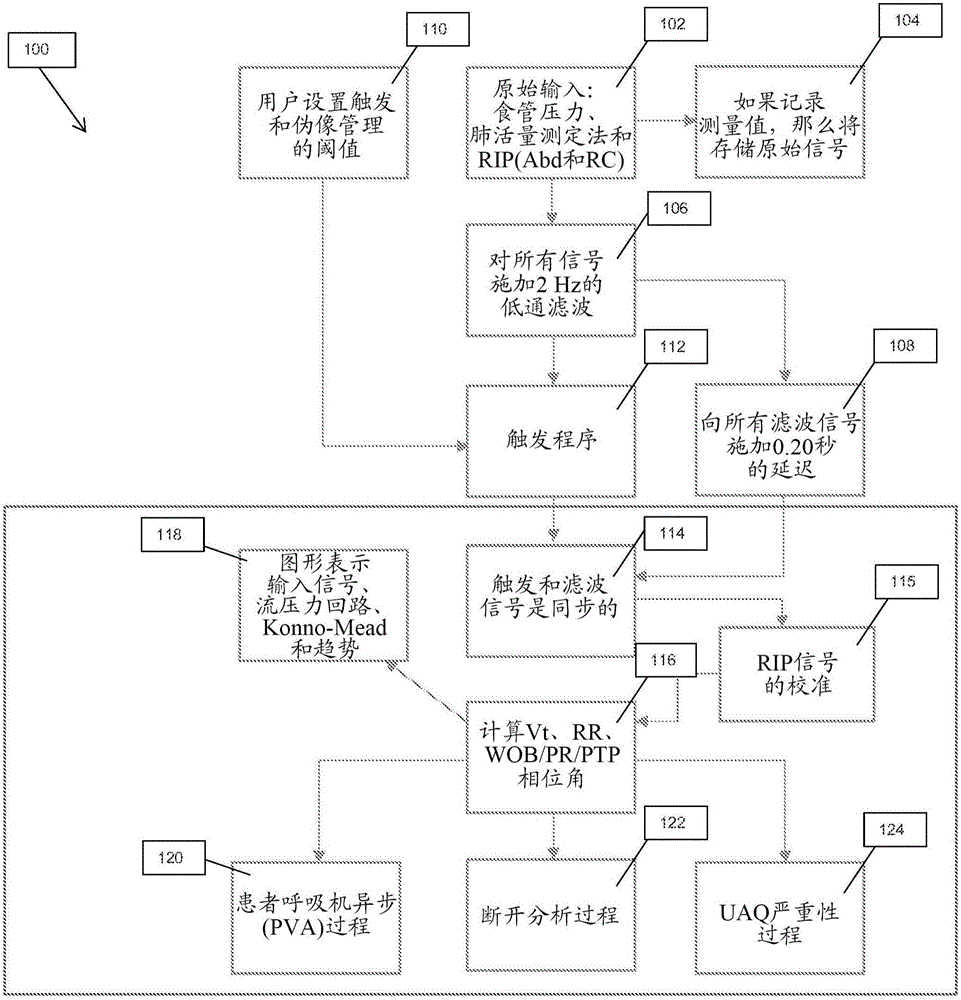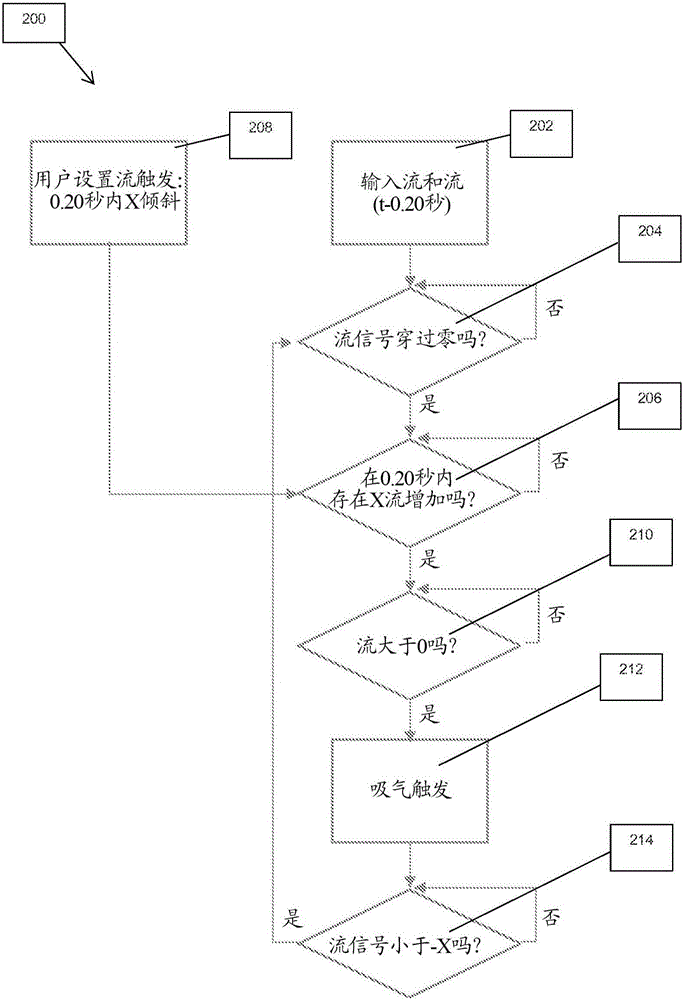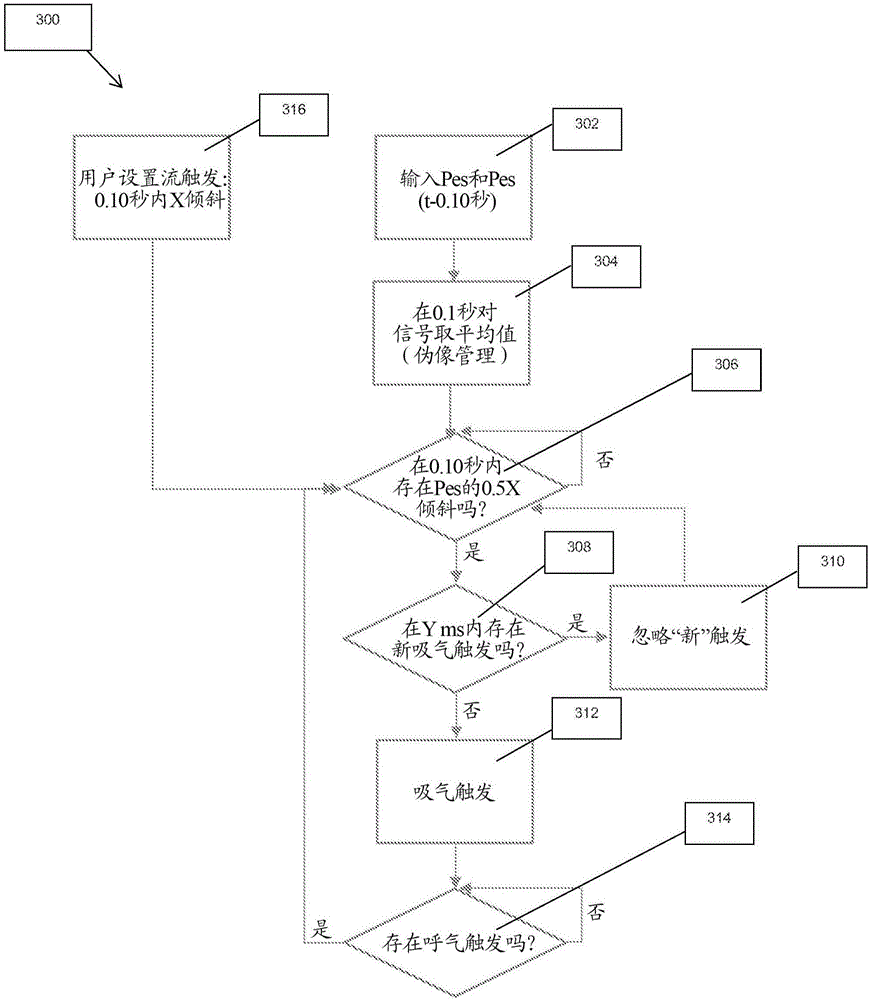Method, system and software for assessing extubation failure
A technology of esophageal pressure and objects, applied in the direction of application, medical science, diagnosis, etc., can solve problems such as complex treatment strategies or preventive strategies
- Summary
- Abstract
- Description
- Claims
- Application Information
AI Technical Summary
Problems solved by technology
Method used
Image
Examples
Embodiment 1
[0148] Embodiment 1: experimental method
[0149] Intervention trials in intubated and ventilated children admitted to pediatric or cardiothoracic intensive care units. If the child was between 37 weeks corrected gestational age and 18 years of age, was intubated continuously for at least 12 hours, and was scheduled to be extubated Monday through Friday from 7 a.m. to 5 p.m. and when the investigator was available, then including said child. Children were excluded if they had contraindications to receive esophageal catheters (high bleeding risk, esophageal abnormalities) or breath electroplethysmography bands (abdominal or chest wall defects).
[0150] research proposal
[0151] After consent was obtained, an age-appropriate esophageal balloon catheter (Carefusion, Avea SmartCath6, 7, or 8Fr) was placed through the nose into the lower third of the esophagus with pressure monitored by chest radiograph or during brief endotracheal tube occlusion Deflection determines catheter...
Embodiment 2
[0154] Example 2: Determination of results: upper airway blockage
[0155] Post-extubation UAO was assessed by examining calibrated respiratory electroplethysmography as a measure of flow combined with esophageal pressure versus the presence of inspiratory flow limitation. Inspiratory flow limitation is characterized by disproportionately high inspiratory effort relative to flow increase (negative esophageal pressure). RIP flow was calibrated under two conditions: spontaneously breathing on CPAP of 5 before extubation using an algorithm called quantitative diagnostic calibration, and as an isovolumetric maneuver during the NIF procedure prior to extubation (Sackner, 1989 #319). We previously showed that NIF calibration (equal volume conditions) is superior to QDC on CPAP, especially when UAO deteriorates. Therefore, NIF calibration of RIP using a combination of RIP and esophageal manometry was used for the primary outcome of inspiratory flow limitation. Flow limitation was g...
Embodiment 3
[0156] Example 3: Analysis
[0157] To assess whether an objective characterization of UAO severity correlates with clinical outcome, the area under the curve (AUC) of the subject operating characteristic (ROC) plot, measured 5 minutes after extubation, was assessed for outcomes of reintubation within 48 hours The UAO severity parameter.
[0158] To assess whether subject parameters differ from the clinical assessment of wheeze, we folded the Westley wheeze score for physicians, nurses, and respiratory therapists into very mild (wheeze without ), mild, moderate and severe categories. We report the predictive power of these scores for the outcome of reintubation at 5 minutes post-extubation, and describe interobserver variability between providers at the time of UAO at 5 minutes post-extubation versus 60 minutes post-extubation, and extubation Variability between clinical providers and objective assessment of UAO after 5 and 60 minutes (using flow-limited algorithm).
[0159...
PUM
 Login to View More
Login to View More Abstract
Description
Claims
Application Information
 Login to View More
Login to View More - R&D
- Intellectual Property
- Life Sciences
- Materials
- Tech Scout
- Unparalleled Data Quality
- Higher Quality Content
- 60% Fewer Hallucinations
Browse by: Latest US Patents, China's latest patents, Technical Efficacy Thesaurus, Application Domain, Technology Topic, Popular Technical Reports.
© 2025 PatSnap. All rights reserved.Legal|Privacy policy|Modern Slavery Act Transparency Statement|Sitemap|About US| Contact US: help@patsnap.com



